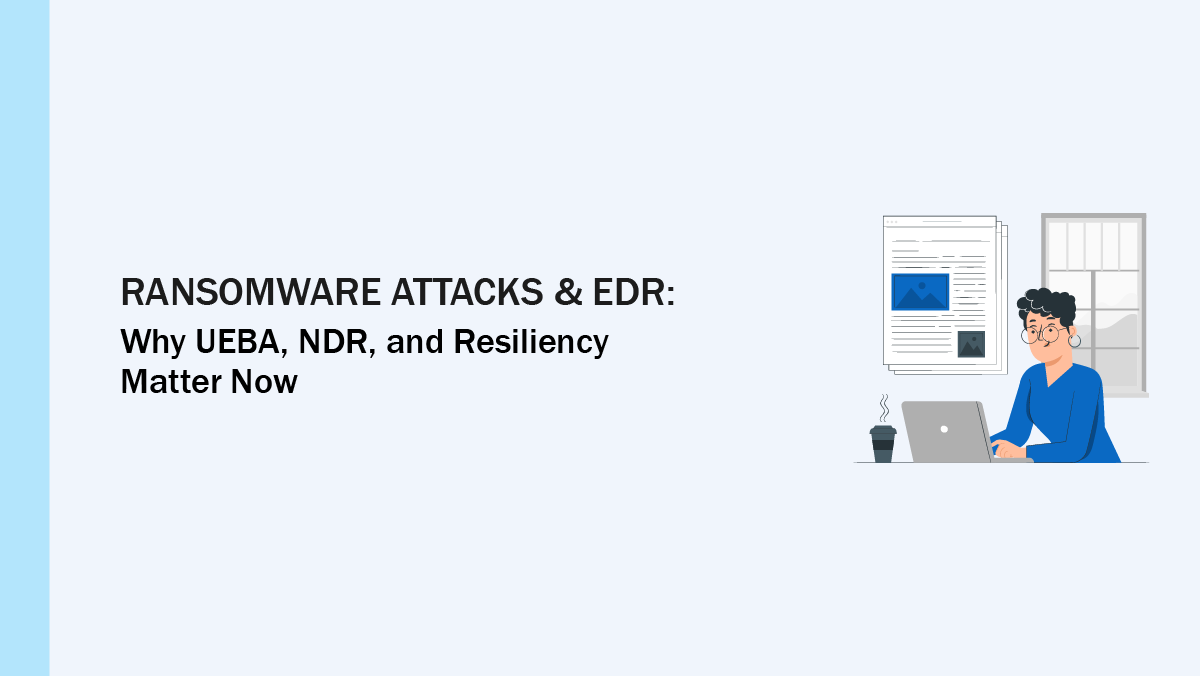Ransomware attacks have shifted from noisy, opportunistic campaigns to more targeted, surgical operations. In recent incidents, attackers have added capabilities that deliberately tamper with or disable endpoint protection, exploit vulnerable signed drivers, or reuse legitimate admin tools to hide their actions. When endpoint telemetry goes quiet, defenders lose the earliest signs of compromise, and the window to contain an attack shrinks dramatically.
That change raises immediate stakes for every organization: detection that relied mostly on EDR can be blind at the worst possible moment, and manual recovery can be too slow to prevent widespread damage. The business impact is real—long outages, data loss, regulatory headaches, and costly remediation.
Given this risk, defenders must move quickly to layered approaches that do not depend solely on endpoint signals. Prioritize analytics that watch behavior, visibility that sits on the network, and resiliency that restores protections automatically.
Why this is urgent: the rising risk to EDR-dependent defenses
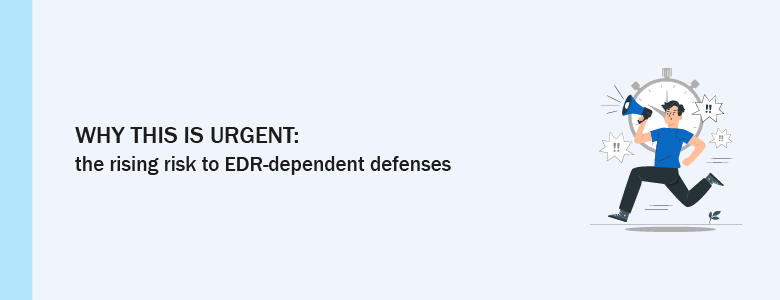
The core problem is straightforward. When an attacker can neutralize an EDR agent, visibility from the endpoint disappears and so does your early warning system. Attackers exploit that window to escalate privileges, move laterally, and encrypt or exfiltrate data before conventional alerts arrive. Businesses that delay looking at these new tactics increase their odds of a costly breach.
This is not theoretical. Multiple vendor and industry advisories have documented techniques that target agent drivers, alter kernel hooks, or use legitimate admin tools to stop protection. The practical outcome is a shorter response window and a higher likelihood of successful ransomware events. That is why shifting to layered, resilient detection and automated recovery is no longer optional.
UEBA first — detect anomalies, including when EDR goes quiet
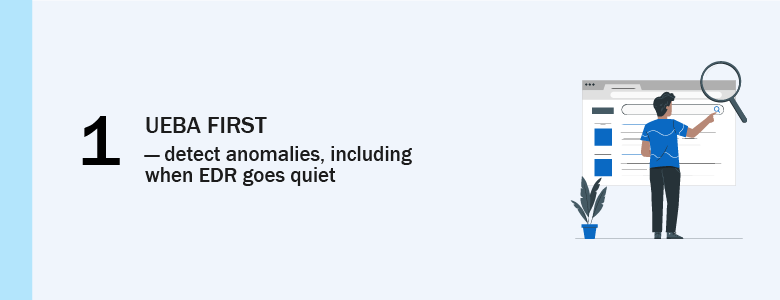
User and Entity Behavior Analytics, or UEBA, looks for abnormal behavior rather than specific malware signatures. That becomes a powerful fallback when endpoint telemetry is muted. UEBA learns normal patterns for users, services, and devices and notifies you when something deviates — for example, a sudden drop in endpoint telemetry combined with unusual authentication activity.
When combined with conditional access, UEBA can automatically raise the bar for risky sessions: require step-up authentication, quarantine the device, or block access until the event is reviewed. Crucially, UEBA can flag the absence of expected signals. If the EDR agent stops reporting, UEBA can surface that as an actionable anomaly rather than a silent failure.
- UEBA use cases: detect sudden agent silence, unusual lateral access, and credential anomalies.
- Integration tip: feed UEBA with identity, network, and cloud telemetry for richer baselines.
- Action point: map which conditional access actions should trigger when UEBA flags an EDR outage.
NDR next — keep watching the network when endpoints are down
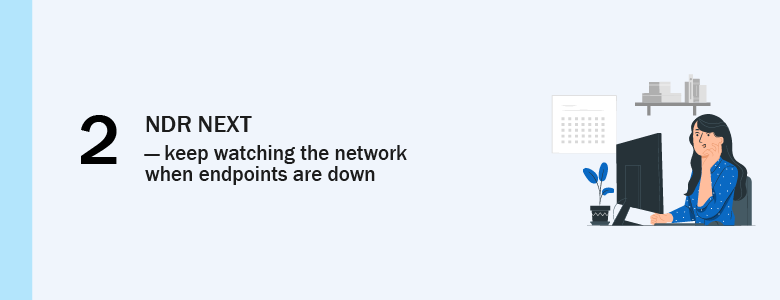
Network Detection and Response provides visibility that sits outside endpoints, using flow data, DNS logs, and packet or metadata analysis to spot lateral movement and data exfiltration. NDR systems see activities that an offline agent cannot, such as suspicious Server Message Block (SMB) traffic, abnormal connections to cloud storage, or unusual internal scanning.
Because NDR observes traffic rather than endpoint status, it is a resilient second line of defense. It can detect attackers moving laterally, communicating with C2 infrastructure, or staging exfiltration. Use NDR to drive automated containment actions that do not require an active agent on the affected host.
- NDR focus: detect lateral movement, unusual protocols, and suspicious external connections.
- Deployment note: place collectors at choke points and ensure encrypted traffic visibility where possible.
- Practical step: feed NDR alerts into your orchestration engine for rapid containment.
Absolute resiliency — self-healing EDR and automated recovery
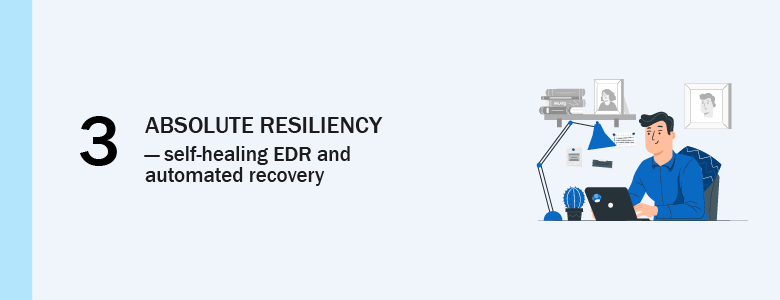
Absolute resiliency means the EDR is designed to come back online automatically when tampered with. Self-healing agents detect configuration changes, reinstall or re-enable their service, and restore protections without waiting for a manual ticket. This capability cuts the attacker’s window and reduces reliance on night-owl analyst responses.
Self-healing also includes automated fallback flows: if an agent cannot be restored quickly, orchestration should trigger containment steps — isolate the host on the network, revoke credentials used there, and start recovery playbooks. Design resiliency so recovery is repeatable, verifiable, and auditable.
- Resiliency pieces: self-healing agent code, automated network isolation, and orchestration-driven credential rotation.
- Engineering tip: validate self-heal paths in a controlled test environment and measure mean time to restore.
- Governance: log automated restores and provide a review trail for post-incident analysis.
Patch and driver hygiene — remove the weak links attackers exploit
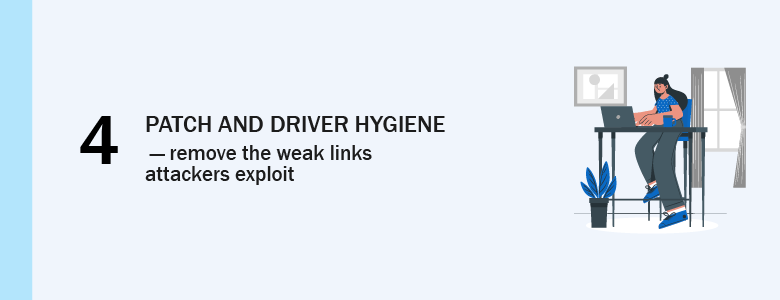
Many EDR-bypass techniques rely on exploiting vulnerable drivers or unpatched OS components. A sophisticated patch program reduces the number of easy wins for attackers. Go beyond monthly updates: identify and replace legacy signed drivers that can be repurposed, and prioritize fixes for components used by local privilege escalation exploits.
A robust patch policy combines inventory, risk-based prioritization, and validation. Track which systems still use legacy drivers and plan replacement or compensating controls. Faster patch cycles for critical hosts reduce the attacker’s ability to exploit known issues.
- Patch actions: maintain an up-to-date driver inventory, prioritize critical CVEs, and schedule rapid rollouts for high-risk assets.
- Validation: post-patch checks ensure agents and dependent services run as expected.
- Compensating controls: if a patch cannot be immediate, isolate the system and tighten access until the fix is applied.
Hardened operational controls — keep the basics tight, but precise
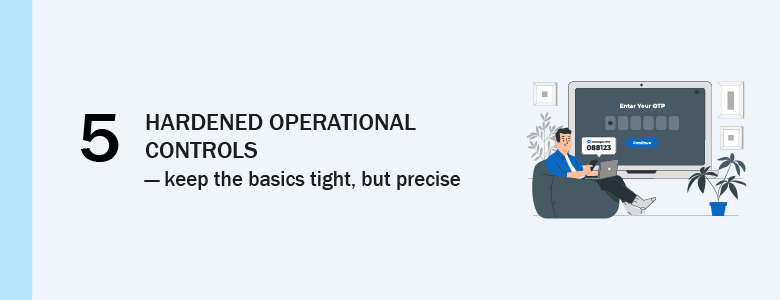
After the advanced layers, keep core operational hygiene in place. These are shorter, high-impact controls that limit attacker movement and speed recovery:
- Enforce least privilege for admin accounts, reduce standing local admin rights, and use vaults for service accounts.
- Require multi-factor authentication on all critical systems and use conditional access where available.
- Make backups immutable and verify restorations regularly so recovery is reliable if containment fails.
These controls are not novel, but when combined with UEBA, NDR, and resiliency they close many of the remaining gaps.
What to Expect from Partners and Providers

When assessing MSSPs or MSOC partners, prioritize those that demonstrate practical, testable capabilities rather than feature lists. Useful partners will explain which telemetry they prioritize, show how they run tabletop exercises for EDR-disabled scenarios, and provide measurable onboarding steps for telemetry and automation.
Ask for simple artifacts: a short onboarding timeline that lists priority data sources, a sample playbook for automated isolation when an agent is offline, and evidence of periodic exercises. These are stronger signals of readiness than marketing claims.
- A short onboarding plan showing which telemetry sources the partner prioritizes.
- A sample playbook or automation flow for isolating hosts when endpoint telemetry is lost.
- Evidence of periodic tabletop exercises that include EDR-bypass scenarios.
Learn more on how to better defend from ransomware attacks and other malware by contacting us at marketing@ctlink.com.ph to set up a meeting with us today!

